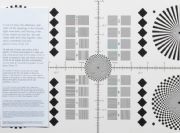Canon PowerShot G12: Best-of-Breed Advanced Point-and-Shoot
 Thanks to its easy operation and adroit balance of strong performance, helpful hardware, and fun shooting modes, the 10-megapixel Canon PowerShot G12 ($500 as of January 3, 2011) earned our top pick in a recent roundup of five advanced point-and-shoot cameras. The G12 received the best overall scores in our image-quality tests--a result that merely scratches the surface of the camera's appeal.
Thanks to its easy operation and adroit balance of strong performance, helpful hardware, and fun shooting modes, the 10-megapixel Canon PowerShot G12 ($500 as of January 3, 2011) earned our top pick in a recent roundup of five advanced point-and-shoot cameras. The G12 received the best overall scores in our image-quality tests--a result that merely scratches the surface of the camera's appeal.Like the competing (and also excellent) Nikon Coolpix P7000, the 5X optical zoom G12 (28mm to 140mm) offers fast access to ISO and exposure-compensation settings via top-mounted dials, a proprietary hot shoe that supports an external flash, an increasingly rare optical viewfinder that helps preserve battery life, an electronic level to keep shots straight, and a thick-but-sturdy body that can take some roughhousing. In the hardware realm, it matches the P7000 and then outpoints it with one extra: an adjustable 2.8-inch LCD that tilts and swivels to help frame overhead shots, ground-level photos, and self-portraits.


 The G12 turned in the best scores of the bunch in PCWorld Labs' subjective tests for image and video quality, with especially impressive marks for exposure quality, color accuracy, and video quality. It was judged superior in all three of those categories, as well as in overall imaging and in video.
The G12 turned in the best scores of the bunch in PCWorld Labs' subjective tests for image and video quality, with especially impressive marks for exposure quality, color accuracy, and video quality. It was judged superior in all three of those categories, as well as in overall imaging and in video.Click on each of the thumbnails at left to see the full-size photos used for our subjective image-quality tests. Below, you can find the sample clips we shot in bright indoor lighting and in low light with the PowerShot G12. For the highest-quality clips, select 720p from the drop-down menu in the lower-right corner of each player.
The camera's battery life is good; according to the Camera & Imaging Products Association (CIPA), which conducts standardized battery testing for all major cameras, the G12 captured 370 shots per charge with its LCD turned on.
At 1.9 inches deep, it's the thickest of the five cameras we looked at, but Canon puts that depth to good use, cramming in fun features to augment the G12's image quality. In addition to an extensive array of manual controls and common scene modes--such as Portrait, Sunset, Landscape, Fisheye, and Low Light--the G12's scene selections include some interesting effects also offered on Canon's lower-end point-and-shoots. The camera's Color Accent and Miniature modes, for instance, are available both for still shots and for video. Color Accent lets you select and isolate a single color in an otherwise black-and-white shot. Miniature mode simulates a tilt-shift lens by blurring the top and bottom of an image and boosting colors, making full-size objects look like scale models.
You also get a full boat of manual controls: aperture priority, shutter priority, and independent control of each of them in Manual mode. And unlike most of the other cameras in our roundup (except the Canon PowerShot S95), the G12 offers a focus bracketing mode that snaps three shots in rapid succession at different focal lengths.
You also get a high-dynamic-range (HDR) scene mode that brings out detail in shadowy scenes and creates otherworldly-looking shots, and an exposure bracketing mode, in case you'd rather compose and combine your own HDR shots.
Despite its complexity, the G12 is remarkably easy to use, owing to a menu system that's consistent with the ones used on Canon's lower-end PowerShot cameras. For the most part, physical buttons, dials, and scroll wheels handle the manual controls: A double-decker dial on the top of the camera lets you select a shooting mode or custom preset, and adjust the ISO setting anywhere from 100 to 3200; and another top-mounted dial provides fast access to exposure compensation settings.
The back of the camera hosts one-touch access buttons for selecting focus areas and light metering, and an "asterisk button" locks the auto-exposure and auto-focus. You can adjust aperture, shutter, and other manual settings by using either a front-mounted horizontal scroll wheel on the camera's grip or a back-mounted circular scroll wheel that doubles as the G12's menu navigation pad.
If you can deal with its slightly larger-than-average body, you'll find that the PowerShot G12 is a terrific camera in its class. Its only potential drawbacks are a relatively narrow maximum aperture of F2.8 and a somewhat slow burst mode speed of 2 shots per second with autofocus turned off and 0.7 shots per second with autofocus turned on. The G12's combination of manual controls, fun features, useful and well-constructed hardware, and excellent performance are extraordinary.


 Saturday, February 05, 2011
Saturday, February 05, 2011

 Posted in:
Posted in:
0 comments:
Post a Comment